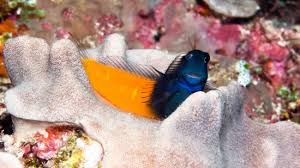Dragons (lóng, 龙) are among the most revered mythical creatures in Chinese culture. Unlike their Western counterparts, which are often depicted as fearsome, fire-breathing beasts, Chinese dragons are symbols of wisdom, strength, prosperity, and harmony. Throughout history, dragons have played an integral role in folklore, mythology, and society, influencing everything from imperial power to spiritual beliefs and cultural traditions.
This article delves into legendary stories about dragons, exploring their significance in Chinese mythology and their lasting impact on social structures, governance, festivals, and daily life.
1. The Origins of Dragons in Chinese Mythology
The dragon has been a part of Chinese mythology for thousands of years, with early references dating back to ancient texts such as the Shan Hai Jing (山海经, “Classic of Mountains and Seas”) and Zuo Zhuan (左传, “Commentary of Zuo”). These texts describe dragons as divine creatures that command the elements and connect heaven and earth.
Ancient Chinese people believed that dragons were celestial beings that controlled the weather, particularly rain, and were responsible for maintaining balance in nature. Some scholars suggest that the dragon’s origins stem from the totemic symbols of early Chinese tribes, evolving into a unified mythological figure as cultures merged over time.
2. Mythological Stories About Dragons
a. The Legend of the Four Dragon Kings
One of the most famous dragon legends in Chinese folklore is the story of the Four Dragon Kings, who ruled the four great seas of China. According to legend, these dragons were compassionate beings who cared for humanity.
The story tells of a time when the land suffered from a terrible drought. The people prayed to the Jade Emperor, the ruler of heaven, for rain, but their pleas went unanswered. Seeing their suffering, the Four Dragon Kings—Azure Dragon (青龙), Black Dragon (玄龙), Red Dragon (朱龙), and White Dragon (白龙)—decided to help. They gathered water from the sea and sprayed it over the land, bringing much-needed rain.
However, when the Jade Emperor discovered their actions, he became furious, fearing that the dragons had overstepped their authority. As punishment, he imprisoned them beneath four great mountains. Despite their imprisonment, the dragons continued to bless the land, transforming into the four great rivers of China: the Yangtze, Yellow, Pearl, and Heilongjiang Rivers.
This legend highlights the dragon’s role as a guardian of the people, reinforcing its association with water, prosperity, and benevolence.
b. The Story of Yinglong, the Winged Dragon
Yinglong (应龙) is a legendary winged dragon in Chinese mythology, often depicted as a warrior who fought on behalf of gods and emperors. According to legend, Yinglong was once a heavenly dragon but chose to remain on Earth to help humanity.
One of Yinglong’s most famous feats was assisting the mythical emperor Yu the Great (大禹) in controlling the Great Flood. When devastating floods threatened the land, Yu sought Yinglong’s help. The dragon used its mighty strength to carve river channels, guiding the water into the ocean and saving countless lives.
This story reinforces the dragon’s image as a protector and a divine force that aids rulers in governing wisely.
c. The Dragon and the Phoenix: A Tale of Love and Balance
In Chinese mythology, the dragon is often paired with the phoenix (凤, fèng huáng) as a symbol of harmony and balance. One famous legend tells the story of a powerful dragon who fell in love with a phoenix.
Despite their differences, they united in love and worked together to create a paradise on Earth. The dragon used its strength to shape mountains and rivers, while the phoenix spread beauty and prosperity through the land. Their union symbolized the balance between yin and yang, strength and grace, and became a representation of marital harmony in Chinese culture.
Even today, dragon and phoenix imagery is commonly found in wedding decorations, symbolizing a prosperous and harmonious marriage.
d. The White Dragon and the Fisherman
Another touching dragon legend tells the story of a poor fisherman who saved an injured white dragon. After nursing the dragon back to health, the fisherman set it free.
Years later, the fisherman found himself in a dangerous storm at sea. Just as he was about to be swallowed by the waves, the white dragon appeared and carried him safely to shore. Before departing, the dragon revealed that it was actually the son of the Dragon King of the East Sea, repaying the fisherman’s kindness.
This story illustrates the values of gratitude, kindness, and the belief that good deeds will be rewarded—a recurring moral lesson in Chinese folklore.
3. The Role of Dragons in Chinese Society
a. The Dragon as a Symbol of Imperial Power
In ancient China, dragons were closely associated with the emperor, who was considered the “Son of Heaven” (天子, Tiānzǐ). The imperial throne was called the “Dragon Throne” (龙椅, lóng yǐ), and emperors wore dragon robes (lóng pǎo, 龙袍) adorned with golden dragon motifs to signify their divine right to rule.
The number of claws on a dragon depicted in art was also significant. The five-clawed dragon was reserved exclusively for the emperor, while four- and three-clawed dragons were used by nobles and commoners, respectively.
This connection between dragons and rulers reinforced the belief that emperors were chosen by heaven to maintain harmony in the world.
b. Dragons in Festivals and Celebrations
The dragon continues to play a central role in Chinese cultural festivals.
- Dragon Boat Festival (端午节, Duānwǔ Jié): One of the most famous celebrations involving dragons is the Dragon Boat Festival, held annually to commemorate the poet Qu Yuan (屈原). During this festival, people race dragon-shaped boats to honor his spirit and bring good fortune.
- Chinese New Year Dragon Dance (舞龙, Wǔ Lóng): The dragon dance is a highlight of Lunar New Year celebrations, symbolizing good luck and the dispelling of evil spirits. Performers manipulate a long dragon figure on poles, making it appear as though the creature is slithering and soaring through the streets.
These traditions showcase how the dragon continues to bring communities together in celebration and cultural heritage.
c. Dragons in Feng Shui and Daily Life
In Chinese metaphysics, dragons are believed to influence the flow of energy (qi, 气) in the environment. Feng Shui practitioners often use dragon imagery to enhance prosperity, especially in homes and businesses.
For example, the “Dragon Vein” (龙脉, lóng mài) concept in Feng Shui refers to the invisible energy lines that run through the landscape, believed to bring fortune when harnessed correctly. Many ancient Chinese cities and temples were built according to these principles to maximize harmony with nature.
Conclusion
Dragons have been deeply woven into the fabric of Chinese society, representing power, wisdom, protection, and prosperity. Their presence in mythology, imperial symbolism, festivals, and daily life demonstrates their enduring significance.
From the benevolent Four Dragon Kings to the mighty Yinglong, dragon stories teach valuable moral lessons and reinforce cultural values such as gratitude, harmony, and righteousness. Even in modern times, the dragon continues to be a beloved symbol, inspiring art, architecture, and national identity.
As China continues to evolve, the dragon remains a powerful reminder of its rich cultural heritage—an eternal guardian of the past, present, and future.


